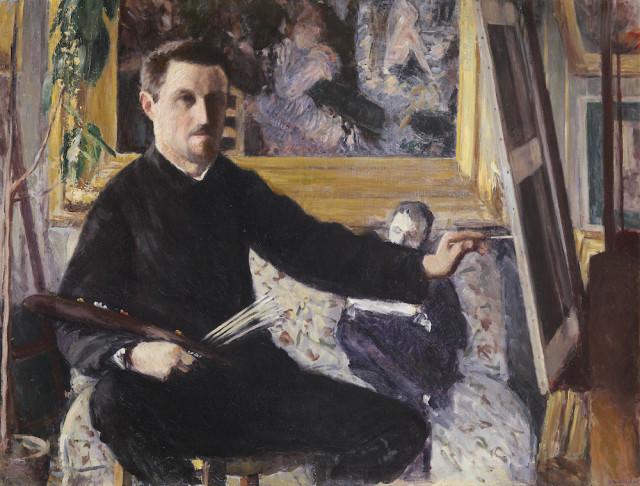Art & Exhibitions
Picasso Can Wait – Run to Caillebotte First
THE DAILY PIC: Gustave Caillebotte has hidden depths that make him a must-see.

THE DAILY PIC: Gustave Caillebotte has hidden depths that make him a must-see.


THE DAILY PIC (#1398): Just went to MoMA’s “Picasso Sculpture” show, and it’s full of great stuff – as it had better be, given the great name in its title. This column won’t feature it, however, until next week, because there’s a more surprising, enlightening show to write about ASAP. There’s only about a week left to go in the National Gallery’s survey of the art of Gustave Caillebotte, and it is full of amazing, lesser-known works that should not be missed.
Caillebotte is better known as the wealthy patron who funded the Impressionist movement than as one of its best painters, but it turns out that he consistently made some of its most radical, rule-breaking works. Beginning in the 1870s already, Caillebotte achieved weirdnesses of scale and style and form and surface that Monet and Renoir barely attempted, and that we really don’t see again until Gauguin and Vuillard and their ilk, 15 or 20 years later. (There are so many echoes of Caillebotte in Vuillard that I wonder if there’s a closer connection between them than I’ve ever heard.)
I’d even say that Caillebotte’s peculiarities give his pictures a conceptual, even philosophical dimension that the other Impressionists mostly lack.
Take today’s self-portrait, painted in 1879 and recording Caillebotte’s ownership of Renoir’s Moulin de la Galette, which we see on the back wall. (On top of everything else, Caillebotte was a great collector; lots of Impressionist masterpieces now owned by the French state started out in his hands; France was reluctant, at first, to accept his bequest.)
In the (literal) game of mirrors played in Caillebotte’s picture, the object that we are busy looking at on the NGA’s wall (or in this Daily Pic) is also depicted on its surface: We see the self-portrait edge-on to our right, as Caillebotte works on it. That gives the whole piece a strange time-machine quality: The self-portrait exists at an earlier moment (call it moment “a”) while we see it receiving paint from Caillebotte’s brush, and then, simultaneously, in a later moment (“a1”) in the form of the very object that we are looking at.
Caillebotte himself also seems to be floating through time and space, as though he had a triple existence. Looking in the mirror in front of him, he’s seeing precisely the same vision that we are – meaning he can be thought of as standing beside us in the gallery. But of course he’s also looking at that same scene on the surface of his self-portrait as it sits in his studio, being worked on in 1879. Finally, he’s also surrounded by that scene as a flesh-and-blood participant in it – as his own “sitter”, in fact. Imagine him turning his head toward his Renoir, and you’ll understand what I mean. (Or not: The confusion – ontological? epistemological? – is part of Caillebotte’s greatness.)
The self-portrait also plays games of scale than have social repercussions. Because the Moulin de la Galette is being seen reflected in a mirror – the mirror Caillebotte is using to paint his self-portrait – it appears reversed left-to-right and seems far off in the background. This means that, in simple surface area, that huge painting seems far smaller than the modest Caillebotte self-portrait we are looking at. (It has to be smaller, or it wouldn’t fit inside the self-portrait’s edges!) In fact, Renoir’s work has to be very small indeed, if it is to fit inside the even smaller incarnation of the self-portrait that we glimpse edge-on as it is being painted.
The wealthy Caillebotte admired the Impressionist masters he helped support. But I think he also knew that he could, very quietly, prove that he was a painter – and a thinker – with a bigger talent than theirs.
For a full survey of past Daily Pics visit blakegopnik.com/archive.